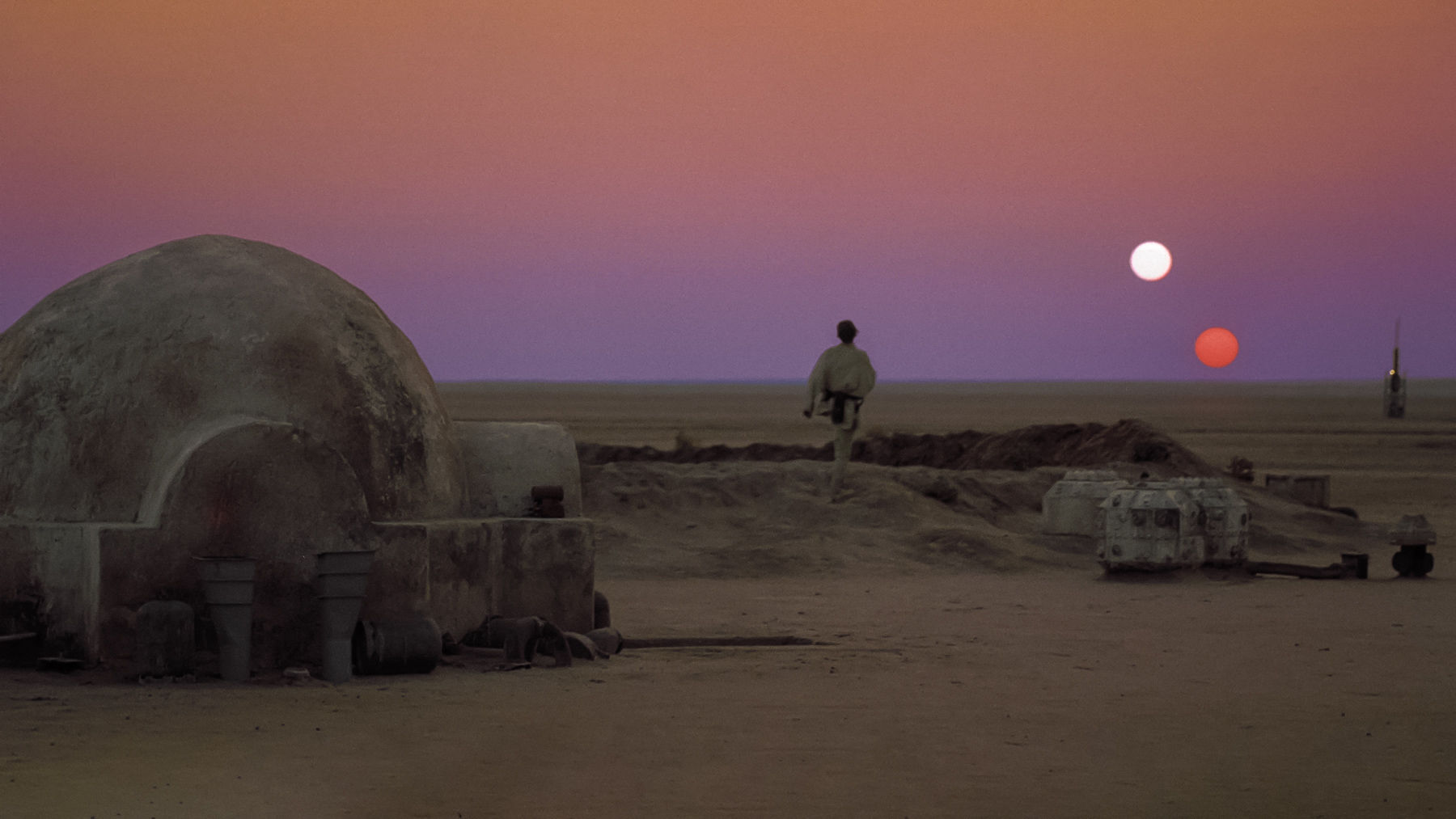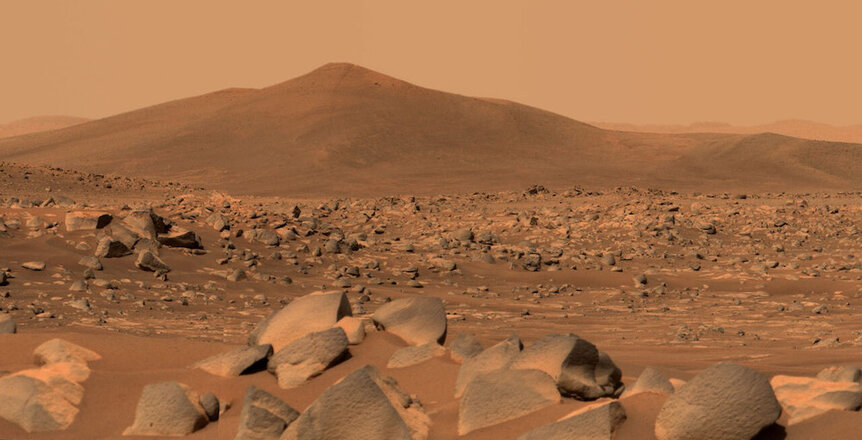Create a free profile to get unlimited access to exclusive videos, sweepstakes, and more!
How did Tatooine become a desert planet? The science behind the fiction
Tatooine is a cautionary tale, warning us about Earth's ultimate fate.

Luke Skywalker famously said if there was a bright center of the universe, Tatooine was the planet it was farthest from. That didn't stop it from becoming the most famous planet in a galaxy far, far away, smack in the middle of one of the most successful pop culture franchises of all time.
That's pretty impressive for a planet that, on the surface, doesn't have whole lot going for it. It has two suns, which is pretty neat, but its environment is a nearly barren landscape, a global desert freckled with ravenous animals and vicious crime lords. It's not the friendliest place to try and build a life. But that wasn't always the case for our favorite fictional desert planet.
In the old Legends canon we learned that Tatooine used to be a lush world with large oceans and expansive greenery. Once Disney took over the franchise most of the old lore was stripped away, not unlike Tatooine's oceans, but a recent episode of The Book of Boba Fett brought that that piece of Tatooine's history back. Which raises the question: How does a world lose that much water?
A TATOOINE IN OUR OWN SOLAR SYSTEM
Star Wars supposedly takes place in our universe, in some unnamed far away galaxy a long time ago, but without any specifics, we are forced to look at our own stellar system for an analogue. If ever there was a planet which mirrors the atmospheric evolution of Tatooine, it's Mars.
Early on, in the Martian environment, it's believed that there was liquid water covering a significant portion of the planet's surface. Today, there is only dust and a small contingent of frozen water ice.
There is evidence to suggest that Mars originally had a substantial amount of liquid water flowing over its surface. Ancient riverbeds and dry lakebeds tell us that Mars was once a planet more similar to current day Earth than what we see when we look into the night sky today. So, what happened?
The MAVEN spacecraft — which stands for Mars Atmosphere and Volatile Evolution — descends into the Martian atmosphere every few hours to take measurements and quantify the composition of the gas there and determine the evolution of water vapor, among other things, on the red planet.
What they have found suggests that the Martian atmosphere has been eroded over time, bleeding out into interplanetary space. As the atmosphere deteriorates, hydrogen and oxygen sublimate from the surface into the thin Martian air where they eventually leak out into space. The ultimate result is a planet which was once the sort of place we might want to live and is now a desert.
This process might be aided by dust storms on the Martian surface, those storm lead to increased heating of Mars's thin atmosphere and further sublimation of gases into space. Essentially, Mars began as a lush and livable planet where life might have emerged and thrived, but over billions of years solar activity and other physical processes have stolen away its atmosphere and its liquid water until nothing was left but the barren desert landscape we see today.
WHAT ABOUT OTHER WORLDS?
Mars mostly lost its liquid water because it wasn't able to hold onto much of an atmosphere. Without a gaseous shield to protect it from the interplanetary processes of the solar system, most of its surface gases and liquids bled away into space, but that isn't necessarily the fate of similar planets in other stellar systems.
According to Star Wars lore, Tatooine is supposed to have a diameter of 10,465 kilometers, compared to the 12,742 kilometers of Earth. While the circumference is relatively similar, the total mass can be drastically different. Earth, for instance, has a mass of 5.9736 times ten to the 24th kilograms. That's 59,736 followed by 18 zeroes. By comparison, Mars has a mass of a diameter of 6,752 kilometers — roughly half that of Earth — but a mass of approximately 10 percent that of Earth. Surface area versus volume ratios being what they are, half diameter means a significant difference in gravitational pull, and that has a big impact on how a planet holds gases and liquids.
Meaning, while Tatooine has a relatively similar diameter to Earth, the difference in gravitational attraction is substantially different. The difference in gravity doesn't necessarily mean it will leach its atmosphere and liquid water into space, but it does mean it will happen more quickly than we've experienced on our own planet.
Moreover, Tatooine has two stars, which means twice the stellar radiation falling on the planet, assuming each of them behaves similarly to our own Sun. That doesn't necessarily mean that it will fall into a desert state, but sublimation is more likely, even if the planet doesn't have interference from otherworldly interlopers.
In short, holding onto an atmosphere, and liquid surface waters requires a specific set of planetary conditions which happened to occur on Earth but are potentially unlikely to occur elsewhere. If things had been even slightly different, we might have ended up living on a desert planet like Tatooine, begging to pull water out of the air through water moisturizers, instead of living on the comparatively comfortable planet we enjoy today. Worse, life might not have emerged on Earth at all.
It's also possible that Tatooine exists in a solar system which is a little further along in its stellar evolution. According to models of our own star, over the next billion years a rise in solar luminosity will drive the complete loss of oceans on Earth.
You better enjoy your days at the beach while you can. Before too long, cosmically speaking, our planet will be one big Sarlacc pit.




























